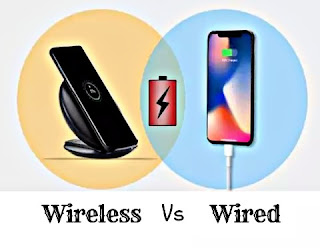11 Mistakes That Are Killing Your Phone
Jaatstuff
Small things we do on a regular day may affect our smartphones in a variety of ways with real consequences, like for example, the Samsung Galaxy Note 7 incident. In order for your phone not to explode on you, here are some simple rules you may want to remember.
We at Bright Side love our little smart devices as much as the next person, and we really want them to live long and be helpful in our day-to-day lives. Here are some things you’ll want to avoid in order to have just that.
Applying weird DIYs from weird sources
At least once, we’ve all believed we could do something after watching a video about it on YouTube. However, unreliable sources provide us over and over again with “life hacks” that are not proven to be helpful but can straight out damage your phone visually or otherwise.
Leaving it on the window or table to overheat
Yes, even sunlight through a window can make your phone overheat. While your device won’t change visibly, overheating hits hard on the phone’s battery and productivity — it can even damage the system’s chip.
Plugging it in carelessly
Have you ever found yourself plugging your phone in blindly before going to sleep, jamming the USB plug into it carelessly and with force? Well, that cuts the lifespan of your charger short. Electrical contacts are way more delicate than we perceive them to be.
Not updating the software and firmware when prompted by the phone itself
It’s the hardware that serves as the “body” of your phone, and the software that serves as its brain and soul. Downloading software from unreliable sources can make the phone malfunction, shut down, or can result in all of your personal information to be transferred to an unknown person.
Not cleaning the inside of your phone
Do not avoid cleaning your phone on the inside — tons of dust and small pieces of garbage and dirt from your pockets and bags can make their way into your phone and interrupt the inner workings of the device (like make it slow, for example). If you’re bad at dealing with technology, ask a professional for help.
Holding your phone in your hand on the street
Literally, 40% of stolen iPhones last year were stolen while their owner had them out on the street while talking on it via speakerphone. It is absolutely necessary for you to be cautious and use a headset to talk when you’re on a crowded street.
Putting it in a bag without a cover
The cover is not only a fashion statement, but it really helps protect your phone from being stuffed with dirt and particles that accumulate at the bottom of your bag. All of this, mixed with the insides of your phone, will make the device overheat and can cause it to malfunction.
Replacing the original battery with a cheap, phony one
The phone battery is the “heart” of the phone — it is its motor. Carefully check what type of battery the service will put in if you take your phone to get repaired — if it’s not the original part of the hardware, the lifespan of your phone will be shortened significantly.
Knock-off chargers and headphones
It’s been reported that due to a difference in the electrical power and the cheap makings of a charger, a device can sometimes catch fire. But not enough people know that when you use knockoff headphones it can damage the phone slot forever. This is because of the slight differences in the sizing of the jack and plug.
Cleaning out phone cavities yourself
Nobody wants their phones to have dusty insides — it slows down performance and makes the phone overheat. But please use professional help or conventional ways to clean out your phone (blow cleaner, etc.) since putting pretty much anything in it will ruin the slots and delicate parts of your phone.
Leaving it in a back pocket
Remember how the iPhone 6 release was spoiled by phones bending in the back pockets of their owners? This can happen to any slim smartphone. But in addition to that, keeping your phone in your back pocket elevates the possibility of it being stolen and damaged while you are visiting the powder room or simply sitting down.
Which one of these faulty actions are you most likely to do? Be sure to share other mistakes we might have forgotten about in the comments below or check out our other articles on the subject.
Jaatstuff
Small things we do on a regular day may affect our smartphones in a variety of ways with real consequences, like for example, the Samsung Galaxy Note 7 incident. In order for your phone not to explode on you, here are some simple rules you may want to remember.
We at Bright Side love our little smart devices as much as the next person, and we really want them to live long and be helpful in our day-to-day lives. Here are some things you’ll want to avoid in order to have just that.
Applying weird DIYs from weird sources
At least once, we’ve all believed we could do something after watching a video about it on YouTube. However, unreliable sources provide us over and over again with “life hacks” that are not proven to be helpful but can straight out damage your phone visually or otherwise.
Leaving it on the window or table to overheat
Yes, even sunlight through a window can make your phone overheat. While your device won’t change visibly, overheating hits hard on the phone’s battery and productivity — it can even damage the system’s chip.
Plugging it in carelessly
Have you ever found yourself plugging your phone in blindly before going to sleep, jamming the USB plug into it carelessly and with force? Well, that cuts the lifespan of your charger short. Electrical contacts are way more delicate than we perceive them to be.
Not updating the software and firmware when prompted by the phone itself
It’s the hardware that serves as the “body” of your phone, and the software that serves as its brain and soul. Downloading software from unreliable sources can make the phone malfunction, shut down, or can result in all of your personal information to be transferred to an unknown person.
Not cleaning the inside of your phone
Do not avoid cleaning your phone on the inside — tons of dust and small pieces of garbage and dirt from your pockets and bags can make their way into your phone and interrupt the inner workings of the device (like make it slow, for example). If you’re bad at dealing with technology, ask a professional for help.
Holding your phone in your hand on the street
Literally, 40% of stolen iPhones last year were stolen while their owner had them out on the street while talking on it via speakerphone. It is absolutely necessary for you to be cautious and use a headset to talk when you’re on a crowded street.
Putting it in a bag without a cover
The cover is not only a fashion statement, but it really helps protect your phone from being stuffed with dirt and particles that accumulate at the bottom of your bag. All of this, mixed with the insides of your phone, will make the device overheat and can cause it to malfunction.
Replacing the original battery with a cheap, phony one
The phone battery is the “heart” of the phone — it is its motor. Carefully check what type of battery the service will put in if you take your phone to get repaired — if it’s not the original part of the hardware, the lifespan of your phone will be shortened significantly.
Knock-off chargers and headphones
It’s been reported that due to a difference in the electrical power and the cheap makings of a charger, a device can sometimes catch fire. But not enough people know that when you use knockoff headphones it can damage the phone slot forever. This is because of the slight differences in the sizing of the jack and plug.
Cleaning out phone cavities yourself
Nobody wants their phones to have dusty insides — it slows down performance and makes the phone overheat. But please use professional help or conventional ways to clean out your phone (blow cleaner, etc.) since putting pretty much anything in it will ruin the slots and delicate parts of your phone.
Leaving it in a back pocket
Remember how the iPhone 6 release was spoiled by phones bending in the back pockets of their owners? This can happen to any slim smartphone. But in addition to that, keeping your phone in your back pocket elevates the possibility of it being stolen and damaged while you are visiting the powder room or simply sitting down.
Which one of these faulty actions are you most likely to do? Be sure to share other mistakes we might have forgotten about in the comments below or check out our other articles on the subject.
























































